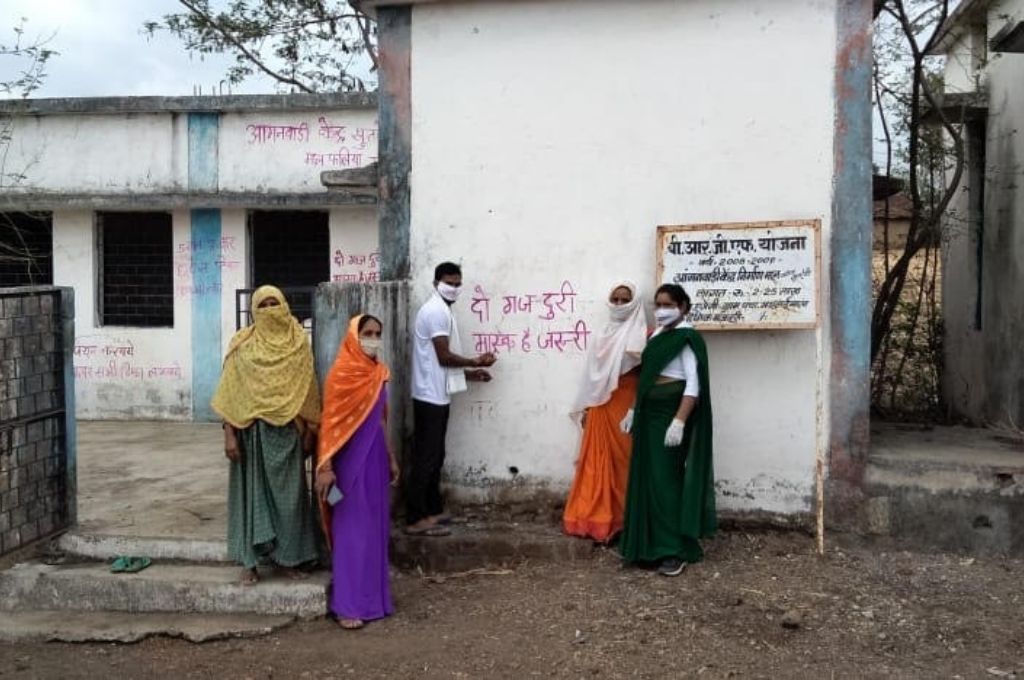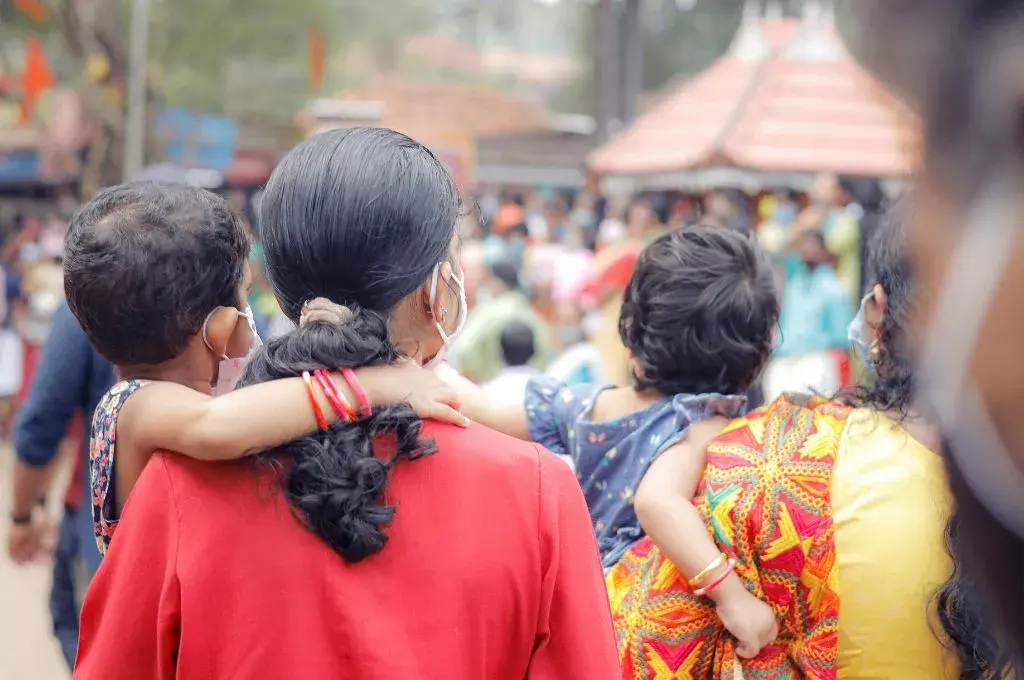The sudden spike in COVID-19 cases in rural areas of Bihar, Jharkhand, and Madhya Pradesh has resulted in much fear and anxiety. As civil society organisations seek to serve their communities in these states, they have had to deal with sub-optimal health infrastructure and services, as well as address the misconceptions among the villagers regarding testing, vaccination, and isolation.
In the over 2,000 villages that Transforming Rural India Foundation (TRIF) has been working in, we’ve estimated that in eight out of ten households, at least one family member is COVID-19 positive. We have also seen fatalities rise in these regions.
Various myths, misinformation, testing and vaccination hesitancy, and a reluctance to disclose their symptoms due to the fear of community ostracisation have made the situation worse. When people do show symptoms like fever and cough, they first turn to the traditional healer or local rural medical practitioner (RMP).
In the surveys conducted in Petlawad, Samnapur, and so on, we found that many locals hid their symptoms, provided false information to healthcare workers, and vented their anger on frontline workers who were mobilising people for vaccination. There is also a real fear that if isolation centres are set up at the local panchayat level, the virus will spread from these centres to the surrounding villages through the air, because of which there is opposition to these centres. The rapid surge, compounded by lack of testing and treatment, is seriously undermining containment efforts.

Apart from augmenting local healthcare facilities, there is a need for a range of other specific measures to stay ahead of the virus. These include:
- Community-based active disease surveillance and triage
- Testing, isolation, preventive, and early curative drug treatment
- Providing access to telemedicine services
- Simple oxygen therapy for mild-severe cases
- Ramping-up vaccinations
The window of opportunity to stop preventable deaths is narrow, but doable. We need to contain the cases at the village level and ensure that they don’t become severe enough that hospitalisation is required.
The need of the hour is a comprehensive approach
1. Increase testing and awareness about infection management
More funding for testing needs to be allocated by the states. Testing is important, especially to help doctors accurately diagnose the disease. In many cases, local RMPs are confusing the virus for simple influenza, thereby delaying treatment and isolation. Since most patients exhibit nonspecific symptoms like fever, headache, body pain, and abdominal pain, it is challenging for healthcare professionals to detect the real cause. Many patients are also being misdiagnosed for typhoid.
Encouraging villagers to isolate in centres will require counselling and facilities with basic infrastructure like toilets, drinking water, and electricity.
In the absence of early detection and monitoring, more cases are turning fatal. We’ve seen this play out within our own team. Dipti Bairagi—our 32-year old colleague, who worked as a part of the extended team in Bijadandi, Mandla—passed away on May 13th, 2021; she was being treated for typhoid.
2. Allocate funds for the welfare of frontline and community workers
With the staff at many nonprofits infected and a few in critical condition, there is a need for organisations to set up welfare funds that offer financial assistance to their team members who need it—be it for buying drugs and other medical supplies, getting hospitalised, or seeking COVID-19-related care. Funders need to step up and provide this additional support since most programme funding does not allow nonprofits to move money from one line item to another, without donor approval.
3. Provide training support to frontline workers
Last year, during the first wave, when we handed out PPE kits to frontline workers, we learned that they didn’t know how to put them on properly because they had never seen protective gear of this kind before. We trained them to use PPEs. This year, we have had to provide a different kind of training—on how to use oximeters, identify infected patients, and encourage patients to isolate.
4. Improve isolation facilities
Most houses in rural India aren’t big enough for individual family members to isolate. This means that once a family member is infected, their entire family will also be affected. There is a need to set up isolation centres closer to their homes, for instance, at the panchayat headquarters.
Currently, however, there are no centres, or the ones that do exist are of extremely poor quality—usually just a ramshackle building, with no toilets or other facilities. Encouraging villagers to isolate in centres will require counselling and facilities with basic infrastructure like toilets, drinking water, and electricity. We are seeing that nonprofits set up some isolation centres in various blocks, which might not be the best approach. If something goes wrong at these centres—if the condition of a patient deteriorates—the organisations are likely to face backlash from the community, local media, and the government. In this case, it would be more prudent to work with the government and to ask them to dedicate a government building as an isolation centre. Nonprofits can then work with them to provide the facilities needed at these centres to ensure that patients are able to isolate as per protocol. Another related concern is the availability of drugs in remote areas; these supplies need to be increased and made easily accessible.
5. Consider collaborating with private hospitals
Government healthcare infrastructure at the block and village level is broken. Many primary healthcare centres (PHCs) are locked, malfunctioning, or have no equipment. Further, there is no trained staff. Hence, even if the state is able to procure medical equipment—oximeters, concentrators, cylinders, ventilators—it will be of little use if there is no staff who knows how to use them. One option is to partner with private hospitals. While there is a general hesitation among nonprofits to work with private entities—who are seen as profit-driven—it might be worth considering healthcare institutions like missionary and other service-oriented hospitals. Unlike government hospitals that have sub-optimal infrastructure and human resources, service-oriented hospitals have trained staff and will be able to better manage the increasing caseloads.
6. Eliminate barriers to accessing entitlements
Many households have been left out of the subsidised food grain support offered by the government. National Rural Livelihood Mission (NRLM) has a compiled list of people, at a block level, consisting of senior citizens, widows, and particularly vulnerable tribal groups (PVTGs), amongst others. We need to ensure that the families listed there have access to adequate food and healthcare. Attention must also be paid to the needs of returnee migrant workers.
In the unfortunate event of death, survivors can access benefits under the Pradhan Mantri Jeevan Jyoti Bima Yojana (PMJJBY), Antyeshti Yojana, and Anugrah Sahayta Yojana among others. Currently, the barriers to access these entitlements are both procedural and digital. Nonprofits need to engage and mobilise local youth and trained community workers to help survivors access these schemes.
7. Ramp-up vaccinations
Apart from the issue of adequate supply, there are multiple factors that are contributing to low vaccination rates—the reluctance of villagers, remoteness of several villages, limited personnel because of the rise in infections among healthcare workers.
A large unvaccinated population is at risk, both to themselves and the larger community. We need a robust decentralised model for improving vaccine coverage. This will require nonprofits to identify eligible populations in each village, create village-level teams for raising awareness, and follow a two-pronged approach—providing facility-based and outreach services. We have seen this approach work even in the remote block of Kurdeg in Simdega district, Jharkhand, where we have been able to achieve 89 percent vaccine coverage of senior citizens.
—
Know more
- Read more about the urgent need for redirecting funding towards relief efforts on the ground.
- Read this take on the unique challenges of and suggestions for combating the second wave of COVID-19 in rural India.
- Read this ground report about how Bihar has been dealing with the second wave of COVID-19.
Do more
- Support nonprofits working on COVID-19 relief efforts and initiatives across India.





